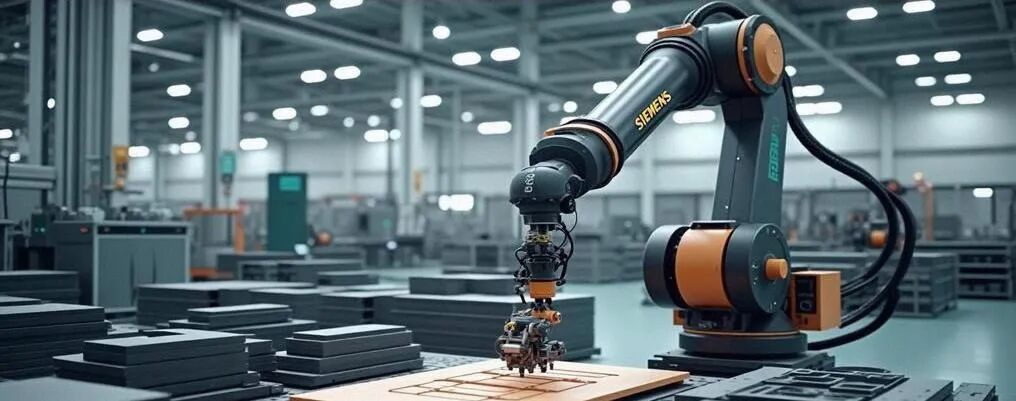Hello everyone, I am an engineer with over ten years of experience in industrial automation, and I particularly enjoy tinkering with various DIY projects. Today, I would like to share an interesting project I recently completed – a smart home control system built with the Siemens S7-1200 PLC.
I believe many friends want to make their homes “smarter,” but are concerned that commercial solutions are too expensive or not flexible enough. So, let’s take a look at how to create a personalized smart home with industrial-grade reliability!

1. Preliminary Preparation
1. Hardware List
- S7-1200 CPU 1214C DC/DC/DC
- Analog Input Module SM1231 4AI
- Analog Output Module SM1232 2AO
- 16-Point Digital Input Module SM1221
- 16-Point Digital Output Module SM1222
- Touch Screen KTP400 Basic
- Various Sensors and Actuators
Tip: It is recommended to choose the DC/DC/DC model, as 24V DC is safer for home environments. I initially used the AC/DC/RLY version, but later found the relay noise too loud, so I switched to the full DC version.
2. Software Requirements
- TIA Portal V15.1 or higher
- Siemens Touch Screen Configuration Software WinCC Basic
- Wireshark for network debugging (optional)
2. System Design Approach
After several revisions, I finalized the following functional modules:
-
Environmental Monitoring
- Temperature and Humidity Collection
- CO2 Concentration Detection
- Light Intensity Sensing
Smart Control
- Air Conditioning Temperature Adjustment
- Fresh Air System Control
- Curtain Automation
- Lighting Scene Switching
Security System
- Human Detection
- Smoke Alarm
- Door and Window Status Monitoring
I suggest starting with a small system; my first version only implemented simple temperature control, and I gradually added other functions, which made it easier to manage the project timeline.
3. Core Code Implementation
Here is a core code snippet for temperature control:
// Temperature PID Control Function Block
FUNCTION_BLOCK "TempControl"
VAR_INPUT
ActualTemp : REAL; // Actual Temperature
SetTemp : REAL; // Set Temperature
ManualMode : BOOL; // Manual Mode
ManualValue : REAL; // Manual Output Value
END_VAR
VAR_OUTPUT
OutputValue : REAL; // Output Value
END_VAR
VAR
PID : PID; // PID Controller
InitDone : BOOL; // Initialization Flag
END_VAR
BEGIN
IF NOT InitDone THEN
// PID Parameter Initialization
PID.Gain := 1.5; // Proportional Coefficient
PID.TI := 20.0; // Integral Time
PID.TD := 5.0; // Derivative Time
PID.CYCLE := 1.0; // Sampling Period
InitDone := TRUE;
END_IF;
// Manual/Automatic Mode Switching
IF ManualMode THEN
OutputValue := ManualValue;
ELSE
PID(
Setpoint := SetTemp,
Input := ActualTemp,
Output => OutputValue
);
END_IF;
END_FUNCTION_BLOCK
4. Practical Experience Sharing
Tuning Tips
- PID Parameter Tuning: I remember the first time I tuned PID, I was flustered, but later I summarized a method:
- First, set TI and TD to 0, adjust P value until there is slight oscillation
- Then add integral time to eliminate steady-state error
- Finally, fine-tune the derivative time to improve response speed
- Network Communication Troubleshooting: When encountering communication issues, you can use Wireshark to capture and analyze packets. That’s how I discovered a TCP retransmission issue with a certain sensor.
Common Problem Solutions
- Sensor Data Jitter: Solutions include:
- Using median filtering
- Increasing sampling time
- Checking grounding conditions
- Touch Screen Response Delay: The cause is often an unreasonable variable update cycle. Recommendations include:
- Set important data to update every 100ms
- Set normal display values to update every 500ms
- Set statistical data to update every second or more
5. Project Results
After several months of debugging and optimization, the system is now running quite stably. Some specific results include:
- The air conditioning can be accurately controlled within a range of ±0.5℃ of the set temperature
- The fresh air fan speed is automatically adjusted based on CO2 concentration
- Multiple scene modes can be switched with one button
- Remote monitoring via mobile APP (achieved through the Siemens IoT2000 gateway)
6. Experience Summary
-
Always remember to back up: This is a lesson learned from my own mistakes – once I accidentally modified the wrong program and couldn’t find the original version, I had to rewrite it… Now I use Git for version control, so I no longer worry about it.
-
Documentation is very important: Be sure to make good comments and documentation; after a few months, you may not even understand what you wrote.
-
Take it step by step: Don’t try to implement all functions at once; breaking it down into steps makes it much easier.
Finally, I hope my experiences can inspire friends who are about to start similar projects. If anyone has questions or suggestions, feel free to discuss. Smart homes are not as difficult as they seem; the key is to practice and learn through hands-on experience.
Remember: Failure is the mother of success. Don’t be afraid to make mistakes, but remember to learn from them. Happy DIYing!
